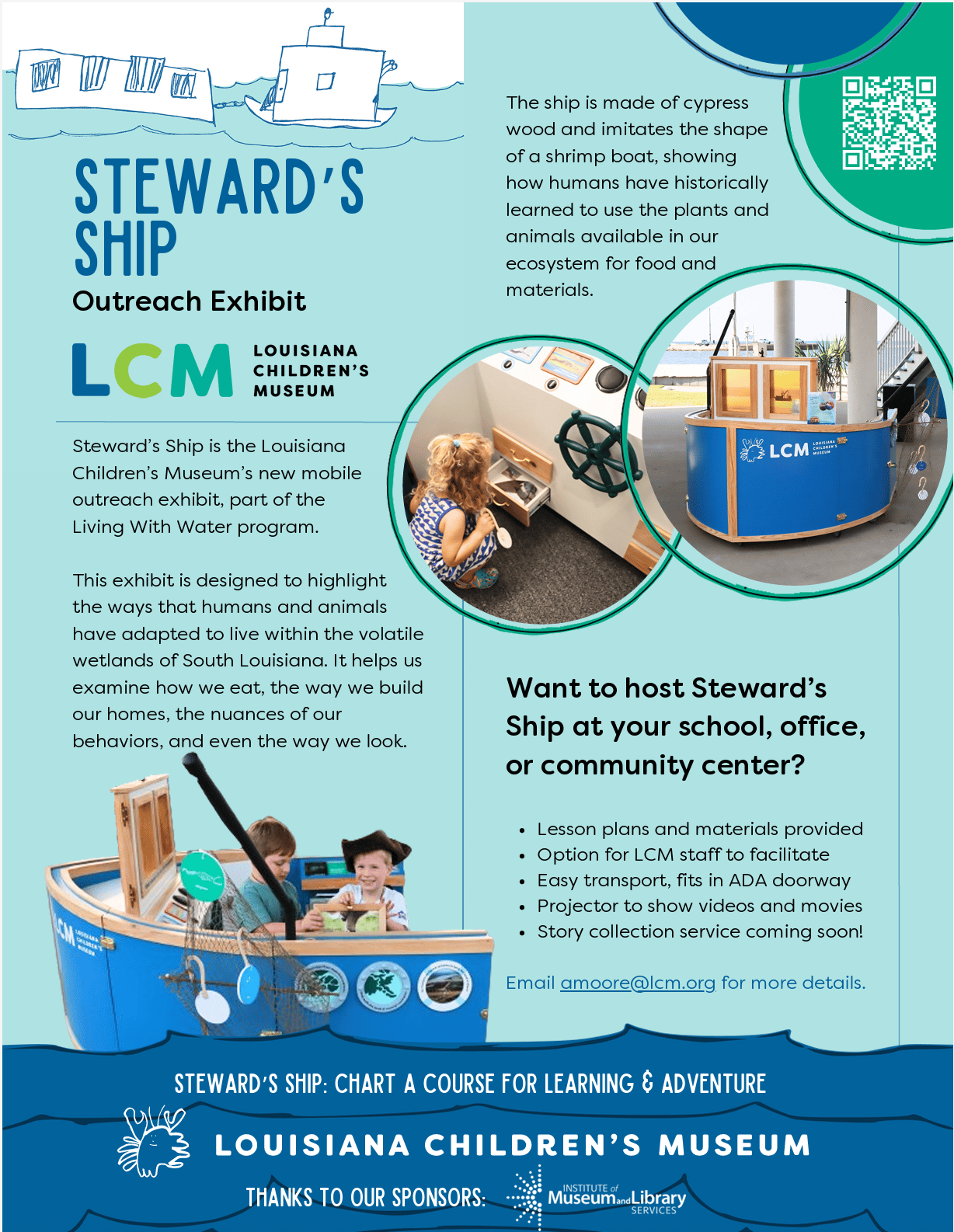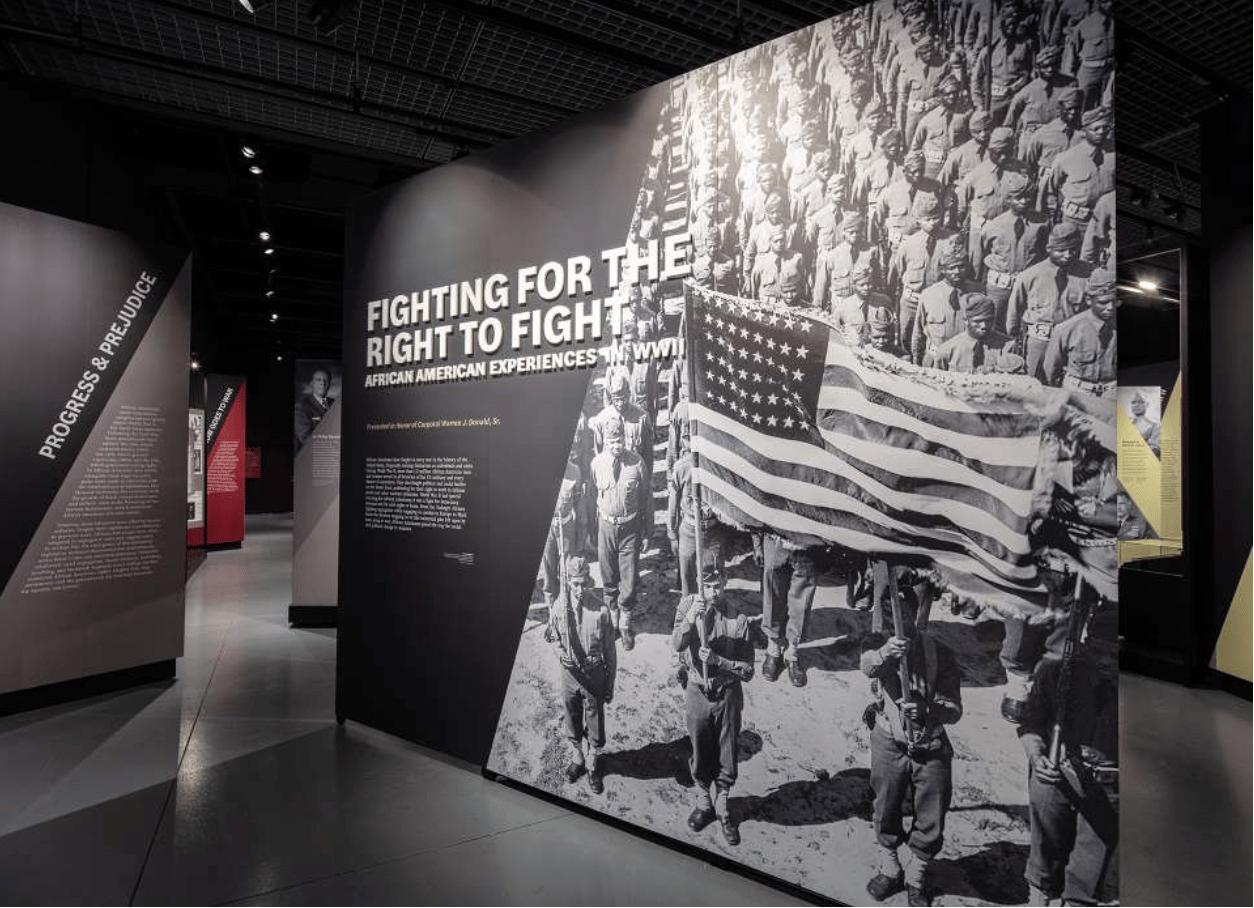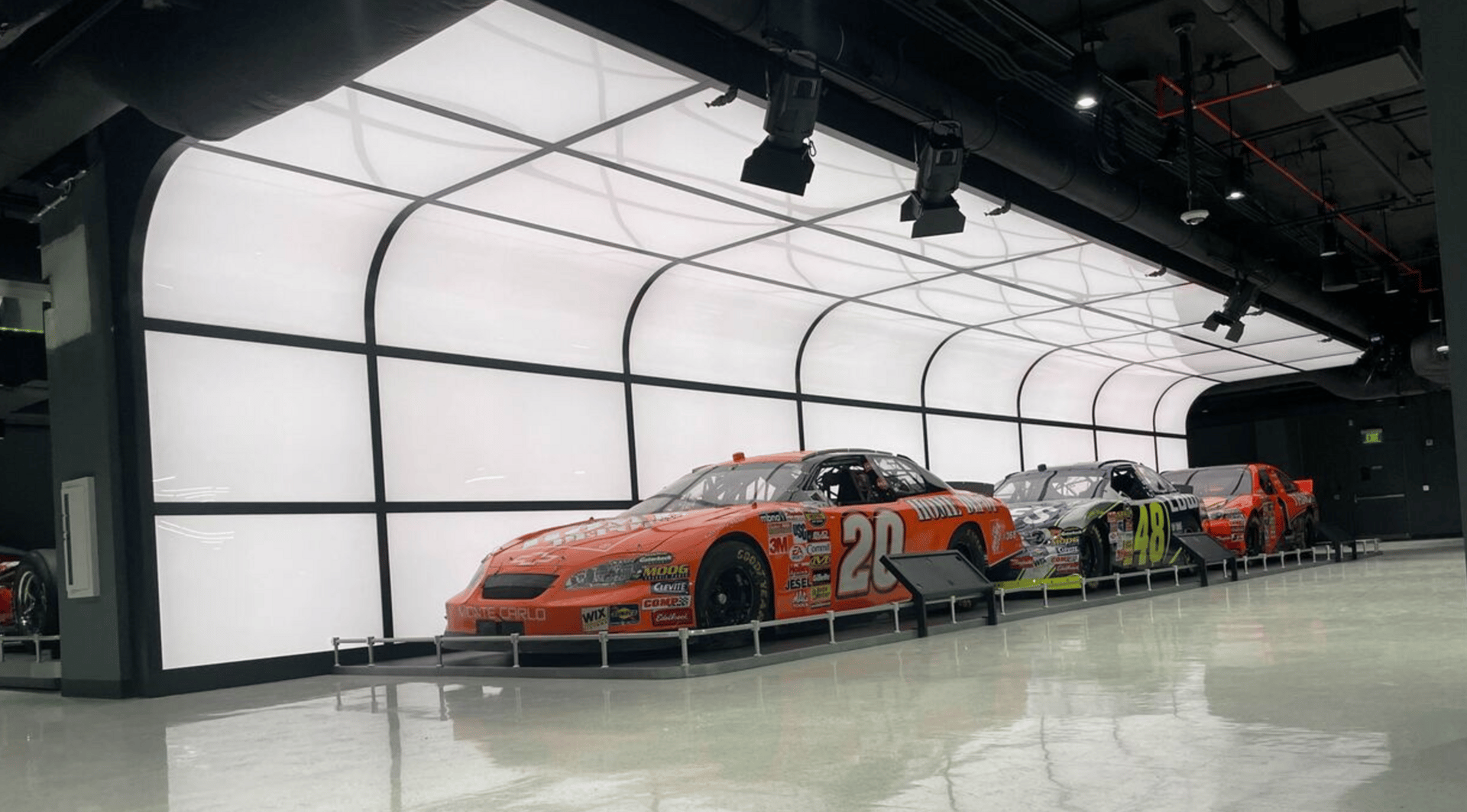- Downtown FabWorks
- Posts
- 5 Things to Consider When Building a Traveling Museum Exhibit
5 Things to Consider When Building a Traveling Museum Exhibit
From material choices to ease of setup—find out what makes a museum exhibit road-ready.
Since August is Museum Month here in New Orleans, this month we're celebrating our museum-industry colleagues and project partners here on the blog and across our social media! Today, we’re taking a look at one of our favorite kinds of projects: traveling museum exhibits.
There’s something undeniably delightful about walking into a traveling museum exhibit and suddenly realizing you’ve been swept far beyond the walls of the school gym, public library, or festival space you initially stepped into. That’s no accident, but it’s also no small feat.
Behind every traveling exhibit is a small army of curators, exhibit designers, educators, fabricators, and production staff—each one working to create a roadshow that sparks wonder while simultaneously ensuring that it’s built to be safe, durable, shippable, and seamlessly repeatable from one venue to the next.
Whether you’re dreaming up your own roadshow or just curious about how it all comes together, here are five things to keep in mind when designing traveling exhibits built for durability, mobility, and repeat performance.

Steward’s Ship is a traveling exhibit fabricated by Downtown FabWorks for Louisiana Children’s Museum to be accessible, easy to move, and compact enough when closed to easily fit into a sprinter van. It travels to schools across Louisiana as part of a 3rd grade curriculum on environmental stewardship. Click through to learn more about the program and sign up to invite Steward’s Ship to visit your school!
1. Modularity is a must
Traveling exhibits absolutely depend on modular design. Each piece needs to break down into shippable parts without losing integrity or impact. Elements should be able to:
Either fit into standard shipping crates or be designed to travel safely with minimal (or no) packing.
Assemble quickly without drama and with limited (or no) tools.
Fold, nest, or stack to maximize space and minimize trucking costs.
Paying attention to modularity up front will always save time, money, and stress—whether the exhibit is traveling across town, across the country, or even around the world!
2. Make it road-tough (and people-proof)
Traveling exhibits live a hard life. From bumpy truck rides to dozens of setups and teardowns, everything needs to be built with a little extra grit.
That starts with selecting materials that can take a beating but still look beautiful, including things like:
Lightweight aluminum framing or structural foam.
Durable, UV-stable, automotive-grade finishes.
Scratch, dent, and kick-resistant surfaces.
Remember that items in a traveling exhibit will see extra wear-and-tear from audience use, too. That means every latch, hinge, and handle should be as carefully curated as the items in your exhibit, and extra attention should be paid to the way viewers will interact with the elements. After all, no one wants their displays held together with duct tape by stop #4.

Don’t forget to consider how sustainability fits into the picture. In 2024, The Art Fund, in collaboration with The Design Museum and The Exhibitions group, released “Rethinking Touring Exhibitions” - an innovative tool to help organizations reduce the environmental impact of traveling exhibits. Click the image to read more and download your own copy.
3. A smooth load-in starts with smart design
Ask anyone who’s toured a show—no matter what kind—and they’ll tell you: smooth load-ins make life a whole lot easier. From those first moments when the crate comes off the truck to the final “ta-da!” of opening day, we consider:
What’s the path to the gallery floor? Will there be stairs, elevators, tight turns...?
Are the elements designed to require the least amount of install and/or moving labor?
Is everything labeled, and are the exhibit plan and assembly instructions in the truck?
What tools will be necessary?
Pro Tip: always pack the toolbox and assembly instructions last, so that they’re the first thing the team sees when starting to unload the truck. Planning ahead and providing clear instructions for load-in and load-out shows respect for the venue, trust in the team, and a little peace of mind for everyone involved.

One of our favorite books is “On The Road Again: Developing and Managing Traveling Exhibitions” by Rebecca A. Buck, Jean A. Gilmore, and Irene Taurins, which offers practical advice for the many considerations required to build a successful traveling museum exhibit. Click image to find a copy on Bookshop.org.
4. Design for the destination and the journey
Fabricating for a fixed space is one thing. Creating an experience that sets up in a high school gym in Peoria one week and a street festival in Atlanta the next? That takes a different kind of creativity. Good traveling exhibits blend scenic fabrication, architectural design chops, and a healthy dash of Murphy’s Law preparation. At Downtown FabWorks, we always ask:
Will these materials be just as durable in different environments?
Can the layout flex to fit tighter footprints without losing intent or impact?
Are the designs accessible and accommodating to varied audiences, no matter the space constraints?
How many people will be available onsite at each location to move elements?
That intersection is where we thrive—our blend of scenic and architectural expertise allows our technical design team to partner with clients, ask the right questions early, and deliver creative, practical solutions to bring ambitious visions to life.
5. The fabricator you choose matters (a lot)
Not every fabricator is wired for travel-friendly storytelling—and that’s okay. But when you're building something that’s going to be packed up, shipped out, and reassembled multiple times, you want a partner who gets it.
Look for a team that’s:
Experienced in both scenic and museum exhibit fabrication.
Collaborative, asking the “what if” questions early and often.
Resourceful, especially when the budget needs finessing.
Backed by an in-house technical design team that can flag potential issues and make sure great ideas translate smoothly in the real world.
Able to offer in-house trucking and installation services.
We’ve built everything from immersive learning environments to high-impact brand activations—and we know that traveling museum exhibits, which exist as an extension of a real-world location, require a specific skillset to tell the right story and make a true impact.

How lucky are we that one of our all-time favorite museums also just happens to be in our backyard? But how lucky are YOU that they’ll soon be coming to a place near you, too! The National WWII Museum not only has an amazing physical location, but it’s also been recognized for its multiple excellent traveling exhibitions.
Click through to learn more about their current travel schedules. (And mark your calendars: “Fighting for the Right to Fight” (shown) will be available for bookings starting Winter 2025!)
The best traveling museum exhibits aren’t just educational. They’re also an invitation to imagine, explore, and to (hopefully) visit the museum that made them possible.
At their best, traveling exhibits are:
Brand activations that get people excited about what your museum has to offer.
Accessible touch points for new audiences in communities that might not otherwise have the opportunity to experience the story you’re sharing.
Reminders that museums are flexible, intuitive organizations worth visiting and supporting.
Done correctly, the exhibit extends the voice of your institution far beyond your walls, making a deeper impact with every mile it travels.
Ready to take your story on the road?
At Downtown FabWorks, our passion lives at the intersection of story and structure. And whether we’re working with cultural institutions, community leaders, or brand creatives, we bring the same focus on partnership and attention to detail. Our work is built to go the distance.
Got a project in mind? Drop us a line. We’re always up for a road trip!


